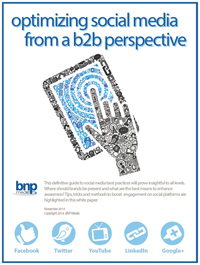
Sean Thomas, GTRI research technologist, prepares a test coupon for color index analysis using a spectra-photometer.
By Sean Thomas, Georgia Tech Research Institute
Food processing faces numerous challenges with controlling different strains of bacteria on the plethora of plant surfaces. Foodborne pathogens account for 76 million illnesses annually in the United States. Of those, 325,000 result in hospitalization and 5,000 result in death.
Numerous research initiatives are evaluating the viability of using nanoparticles as antibacterials for providing food-safety solutions. For thousands of years, various metals, such as silver, gold and copper, were known to prevent microbial, fungal and viral pathogenic activity.
Silver is known for being a powerful germ and bacteria fighter. Silver at a nanoparticle size of 5-20 nanometers will cover large surface areas at small volumes, allowing these nanoparticles to interact with other particles. With bacteria measuring in the micrometers, the difference in scale between the bacteria and the nanoparticles means that on a coated surface a large number of the silver nanoparticles will be available to bond and fight each bacterial or fungal organism.
As few as 100 particles of silver are sufficient to attack micro-organisms of bacteria. Studies show no micro-organism tested has been able to survive when exposed directly to colloidal silver.
Recently, a group of researchers within the Georgia Tech Research Institute (GTRI) teamed with colleagues at the University of Georgia (UGA) and an industrial partner that has developed a nanoparticle deposition technology to conduct efficacy testing of silver nanoparticles on food-processing surfaces. The primary goals of this ongoing research study are to evaluate the functionality of depositing inorganic antimicrobial/antifungal nanocoatings (IANs) on various food-processing surfaces (conducted by GTRI researchers) as well as determine the antibacterial efficacy of the IANs (conducted by UGA researchers).
The GTRI researchers evaluated IANs deposited on various FDA-approved surfaces ranging from stainless steel to different plastics such as delrin, HDPE (high-density polyethylene), and UHMW (ultra-high molecular weight polyethylene). Specific objectives were to determine the resistance of wear and to assess the IANs’ ability to withstand sanitation. A test bed was designed to determine the wear on the surfaces with poultry and other materials such as FDA-approved gloves and cleaning products.
Three-inch square coupons were made at a local machine shop and then coated with silver nanoparticles deposited via a proprietary process developed by the industrial partner. The coupons were fastened to a test bed and poultry product cycled over it to determine wear resistance. In addition, replicates were used in testing to determine bacteria efficacy and sanitation process resistance.
For the sanitation process testing, the coated coupons were pressure-washed and exposed to cleaning chemicals that are used daily in processing plants. Typically, a qualitative measure for determining nanoparticle coverage is used. The industrial partner supplied a proprietary marker that fluoresces when exposed to the nanoparticles deposited on the coupon surface.
The GTRI research team attempted to better quantify coverage using a spectra-photometer that provides a color indexing of spectral distribution between 380 nm to 780 nm. The recorded change in light intensity was used as a surrogate for measuring reductions in particles on the coupon surface.
First-year testing showed light intensity reductions (that are assumed to correlate with silver nanoparticle reductions) of 9.6% for nylon, 8.4% for 316 stainless steel, and only 1.1% for delrin after eight hours of vigorous wear and sanitation. Further work is needed to assess any errors associated with using the color indexing method.
Bacterial efficacy testing used five strains each of E. coli O157:H7, and serovars of Salmonella enteric and Norovirus were tested. The strains were made resistant to 50 ppm nalidixic acid (NA) grown in tryptic soy with 50 ppm NA broth (TSBN; Difco) for 24 hours at 37°C. Five strains/serovars of each pathogen were combined to yield a mixed culture containing equal proportions of each (25 ml). Cells were harvested and resuspended in 25 ml of 0.1% PW.
The bacterial pathogen cocktail and a partially purified culture of Murine Norovirus (MNV), a culturable surrogate for Human Norovirus, were spot inoculated onto coupons and allowed to adhere for time intervals between 1 hour and 24 hours at ambient temperature. After elution from coupons by stomaching or repeat pipetting, standard bacterial culture methods and virus plaque assays were used for calculating log reductions. Further efficacy testing is underway and results are pending.
If the efficacy results prove promising, the team will continue to work together to perfect the process of applying nanoparticles of silver to all FDA-approved surfaces found in food-processing plants.
Numerous research initiatives are evaluating the viability of using nanoparticles as antibacterials for providing food-safety solutions. For thousands of years, various metals, such as silver, gold and copper, were known to prevent microbial, fungal and viral pathogenic activity.
Silver is known for being a powerful germ and bacteria fighter. Silver at a nanoparticle size of 5-20 nanometers will cover large surface areas at small volumes, allowing these nanoparticles to interact with other particles. With bacteria measuring in the micrometers, the difference in scale between the bacteria and the nanoparticles means that on a coated surface a large number of the silver nanoparticles will be available to bond and fight each bacterial or fungal organism.
As few as 100 particles of silver are sufficient to attack micro-organisms of bacteria. Studies show no micro-organism tested has been able to survive when exposed directly to colloidal silver.
Recently, a group of researchers within the Georgia Tech Research Institute (GTRI) teamed with colleagues at the University of Georgia (UGA) and an industrial partner that has developed a nanoparticle deposition technology to conduct efficacy testing of silver nanoparticles on food-processing surfaces. The primary goals of this ongoing research study are to evaluate the functionality of depositing inorganic antimicrobial/antifungal nanocoatings (IANs) on various food-processing surfaces (conducted by GTRI researchers) as well as determine the antibacterial efficacy of the IANs (conducted by UGA researchers).
The GTRI researchers evaluated IANs deposited on various FDA-approved surfaces ranging from stainless steel to different plastics such as delrin, HDPE (high-density polyethylene), and UHMW (ultra-high molecular weight polyethylene). Specific objectives were to determine the resistance of wear and to assess the IANs’ ability to withstand sanitation. A test bed was designed to determine the wear on the surfaces with poultry and other materials such as FDA-approved gloves and cleaning products.
Three-inch square coupons were made at a local machine shop and then coated with silver nanoparticles deposited via a proprietary process developed by the industrial partner. The coupons were fastened to a test bed and poultry product cycled over it to determine wear resistance. In addition, replicates were used in testing to determine bacteria efficacy and sanitation process resistance.
For the sanitation process testing, the coated coupons were pressure-washed and exposed to cleaning chemicals that are used daily in processing plants. Typically, a qualitative measure for determining nanoparticle coverage is used. The industrial partner supplied a proprietary marker that fluoresces when exposed to the nanoparticles deposited on the coupon surface.
The GTRI research team attempted to better quantify coverage using a spectra-photometer that provides a color indexing of spectral distribution between 380 nm to 780 nm. The recorded change in light intensity was used as a surrogate for measuring reductions in particles on the coupon surface.
First-year testing showed light intensity reductions (that are assumed to correlate with silver nanoparticle reductions) of 9.6% for nylon, 8.4% for 316 stainless steel, and only 1.1% for delrin after eight hours of vigorous wear and sanitation. Further work is needed to assess any errors associated with using the color indexing method.
Bacterial efficacy testing used five strains each of E. coli O157:H7, and serovars of Salmonella enteric and Norovirus were tested. The strains were made resistant to 50 ppm nalidixic acid (NA) grown in tryptic soy with 50 ppm NA broth (TSBN; Difco) for 24 hours at 37°C. Five strains/serovars of each pathogen were combined to yield a mixed culture containing equal proportions of each (25 ml). Cells were harvested and resuspended in 25 ml of 0.1% PW.
The bacterial pathogen cocktail and a partially purified culture of Murine Norovirus (MNV), a culturable surrogate for Human Norovirus, were spot inoculated onto coupons and allowed to adhere for time intervals between 1 hour and 24 hours at ambient temperature. After elution from coupons by stomaching or repeat pipetting, standard bacterial culture methods and virus plaque assays were used for calculating log reductions. Further efficacy testing is underway and results are pending.
If the efficacy results prove promising, the team will continue to work together to perfect the process of applying nanoparticles of silver to all FDA-approved surfaces found in food-processing plants.
Sean Thomas is a research technologist in the Georgia Tech Research Institute’s Food Processing Technology Division. His areas of expertise are electronic and mechanical system design. He can be contacted by email at sean.thomas@gtri.gatech.edu. John Pierson, GTRI principal research engineer, also contributed to this article.



